Why Analyze Ferrari Peeks
I'm working on CSGO data analytics to better understand the meta (the dominant strategies) and improve as a competitor. These analytics may enable interesting systems research on spatio-temporal databases, as I discussed in my previous blog post explaining the CSKnow data set. I use the CSKnow data set (extended with data from pro matches) in this post to study a hotly debated aspect of the CSGO meta: Ferrari peeks.
Surprising Aggression
ZywOo is a top tier entry fragger. When reviewing his play vs Gambit on 6/3/21, I was surprised by how aggressively he peeked A site from cat:
He uses the run boost to Ferrari peek the A site, wide swinging around cat's corner and focusing on the right half of site. When I peek A site from cat, I try to check all the corners of site in left-to-right order so that I can pre-aim possible enemies at each angle. While ZywOo's teammates peek the left side of the box after he peeks the right side, I assumed that a pro with fast reaction times would be able to hold a passive angle from the left side of site. This would enable the player to eliminate ZywOo and hide before ZywOo's teammates could trade. Clearly, ZywOo doesn't have the same concerns.
Based on ZywOo's play, I have a hypothesis: you should aggressively Ferrari peek A from cat without clearing the left side of site. Let's look at data from a couple matches to see if this Ferrari peeking hypothesis holds across a broader range of situations.
(Some) Data Supports The Aggression
I analyzed 4 pro de_dust2 matches [1, 2, 3, 4] and found 3 situations where T players (1) attempted to take A site from cat (2) without clearing the left side of boxes on A before wide-swinging and (3) didn't know the site was already clear. In all 3 situations, the T's win the round (note: rounds are indicated by score at end of round, matching HLTV's notation):
- Round 0-1 of Vitality vs Gambit: Gambit wins pistol round by Ferrari peeking A from cat.
- Round 10-9 of ex-Winstrike vs AGO: AGO wins a buy round for both teams by Ferrari peeking A from cat. This round is a borderline inclusion as all 3 living CTs were not on A at the time of the A take and one T player's (reatz) cursor comes very close to focusing on the left side of A site boxes as he wide swings. I chose to include the round as the T's weren't aware that A was open and reatz comes close but never actually focuses on the left side of A.
- Round 8-0 of Gambit vs NIP: Gambit wins a buy round for both teams by Ferrari peaking A from cat.
This 100% success rate suggests that Ferrari peeks may be a good way to take A site from cat. I identified all situations involving Ferrari peeks from A cat using the CSKnow spatio-temporal database project and demos downloaded from HLTV. I processed these demos using a five step process:
-
Identifying Ts on Cat:
I identified all demo ticks where Ts were standing on the region of cat that first exposes them to A site.
The coordinates for this region are given by this file.
The code for identifying these ticks is in this file.
The red box in the below images visualizes this region:
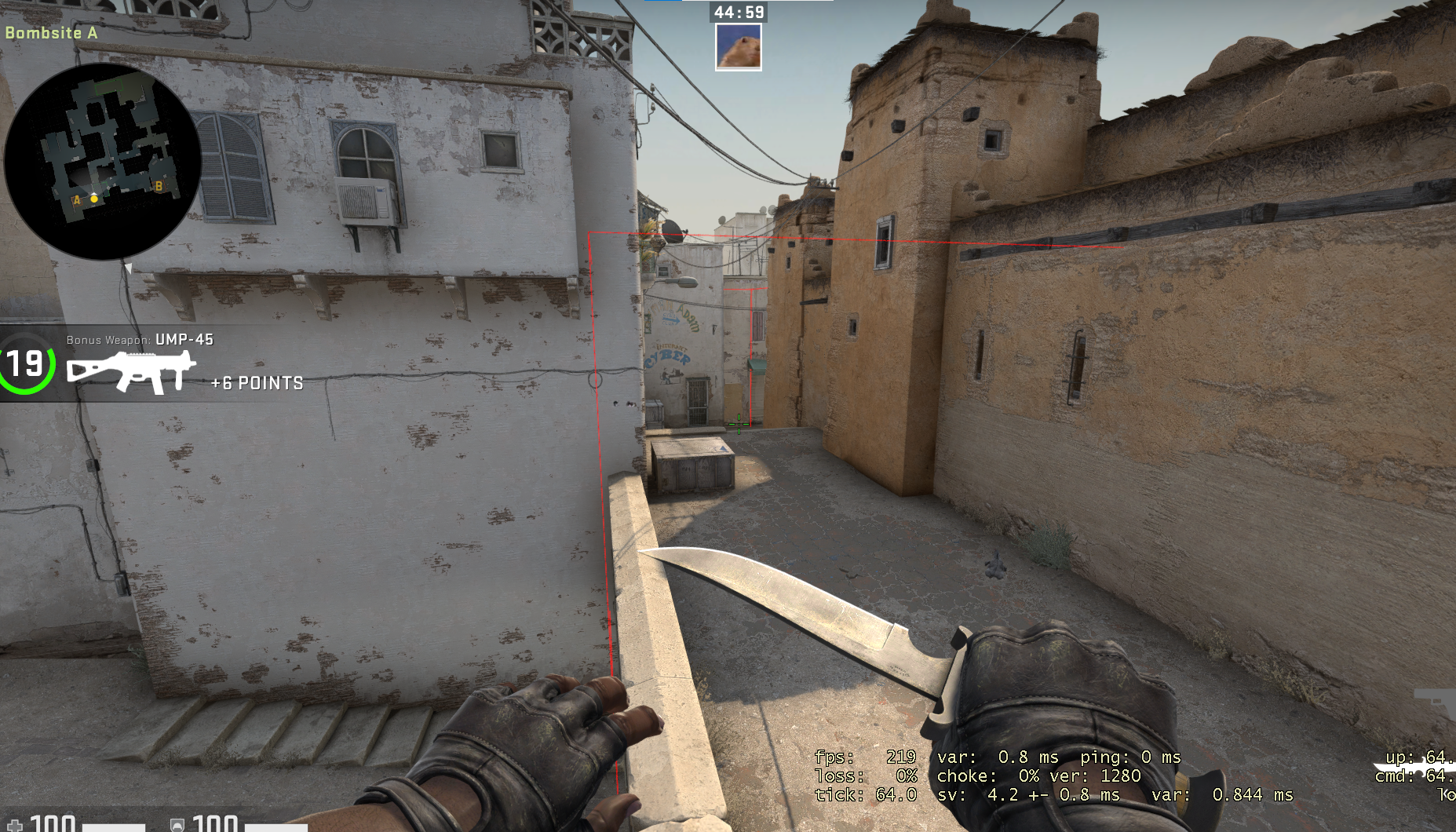
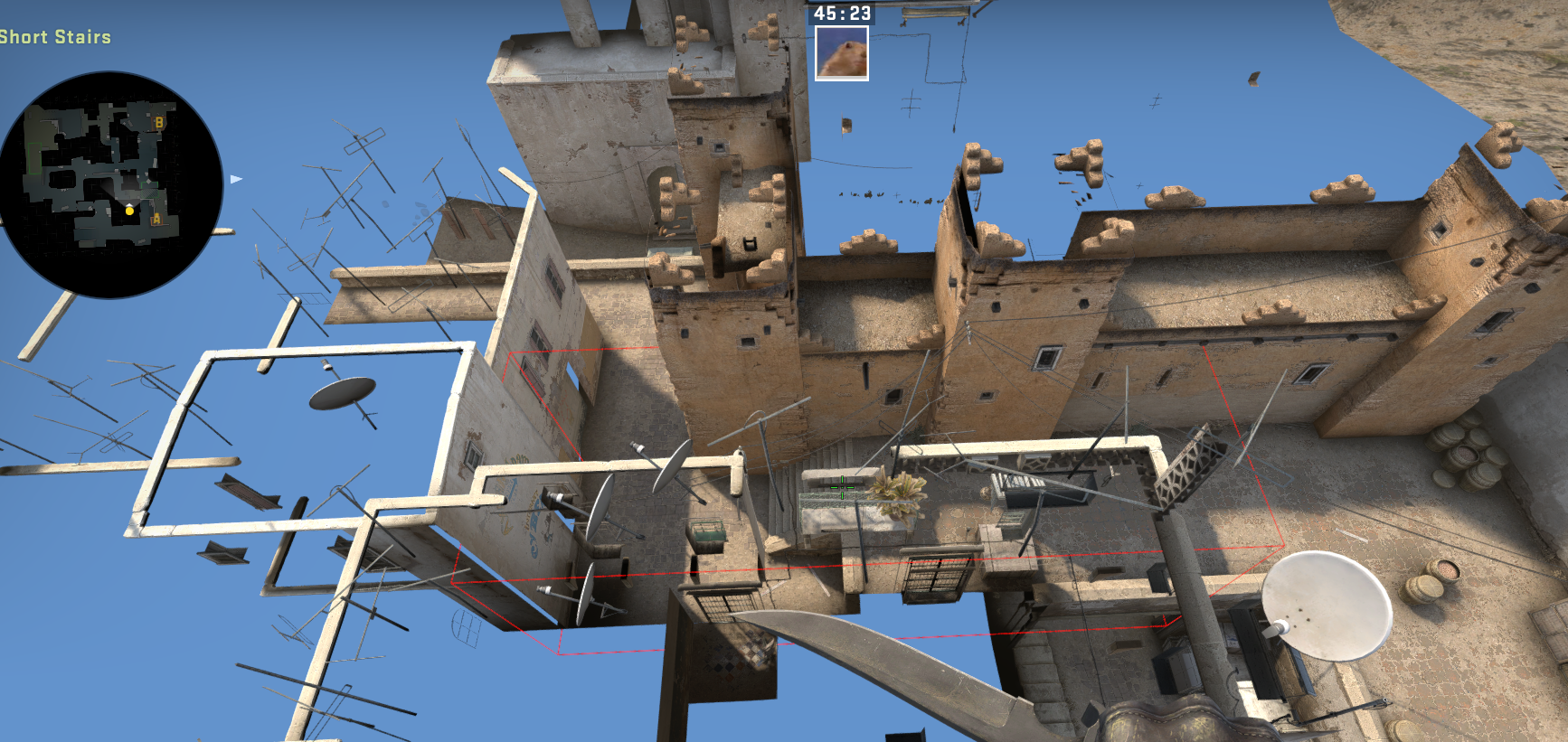
- Determining Player's Attention: I determined where players looked each demo tick by projecting a ray from each player based on their position and the angle of their crosshairs. I stored the (x,y,z) of the intersection between this ray and a wall on A site. If the ray intersected multiple walls, I took the wall which intersected the ray first. The code for computing these intersections is in this file.
-
Identifying Important Areas For Attention:
I ran k-means clustering on these (x,y,z) coordinates with 24 clusters to identify locations where players focus their attention.
You can see the key clusters for the elevator, fast car, and long walls below.
I have visualized them both using a 2D map and the game engine.
The 2D map shows the clusters with green numbers.
In the map view, clusters 21 and 22 are on top of each other, with 22 being larger since it is higher in the air and has a larger z coordinate.
I am not including all 24 clusters, like the ones at ninja, for clarity.
The game engine shows them as red boxes.
The box sizes are arbitrary and may clip into the ground, like cluster 20 at the bottom of the ramp to A site.
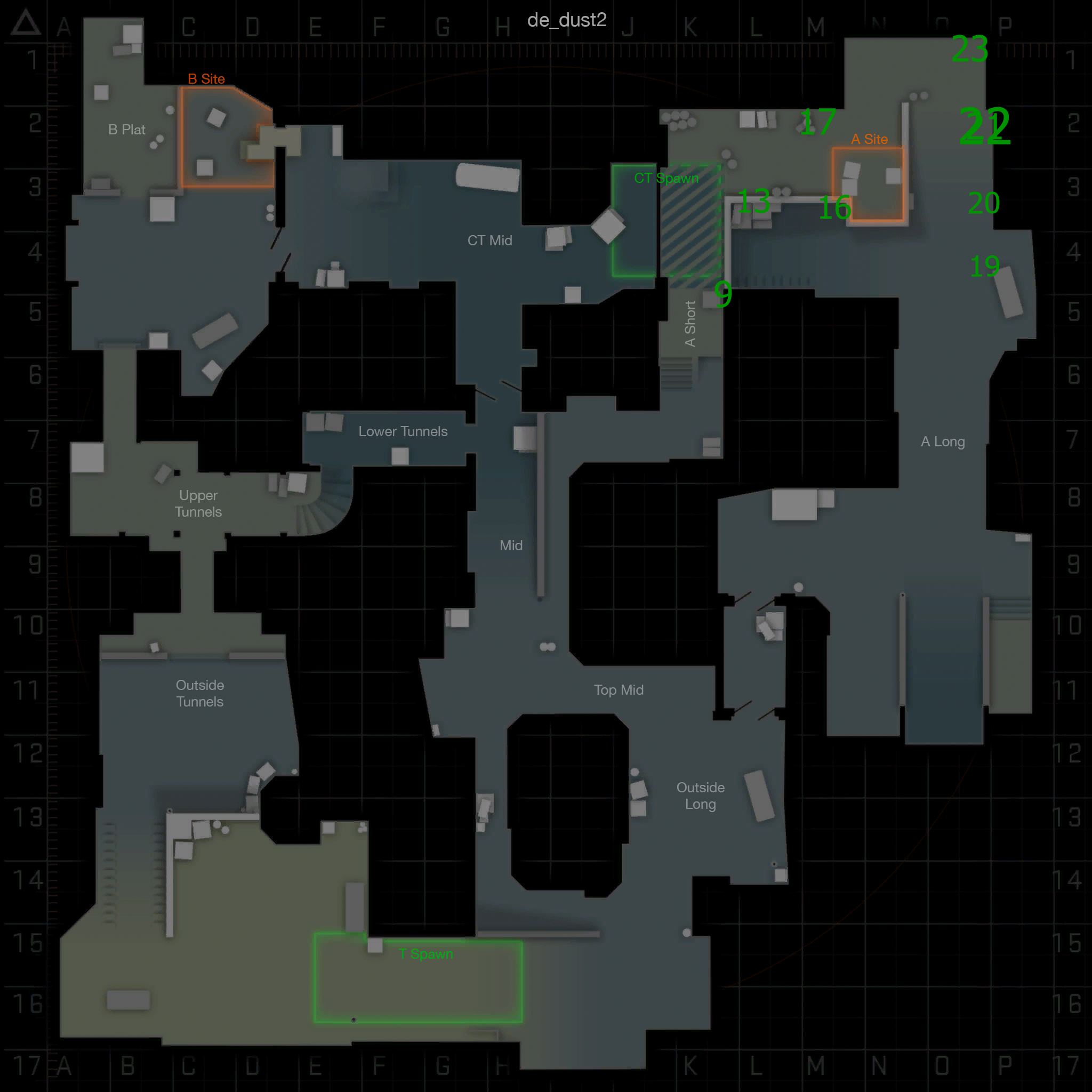
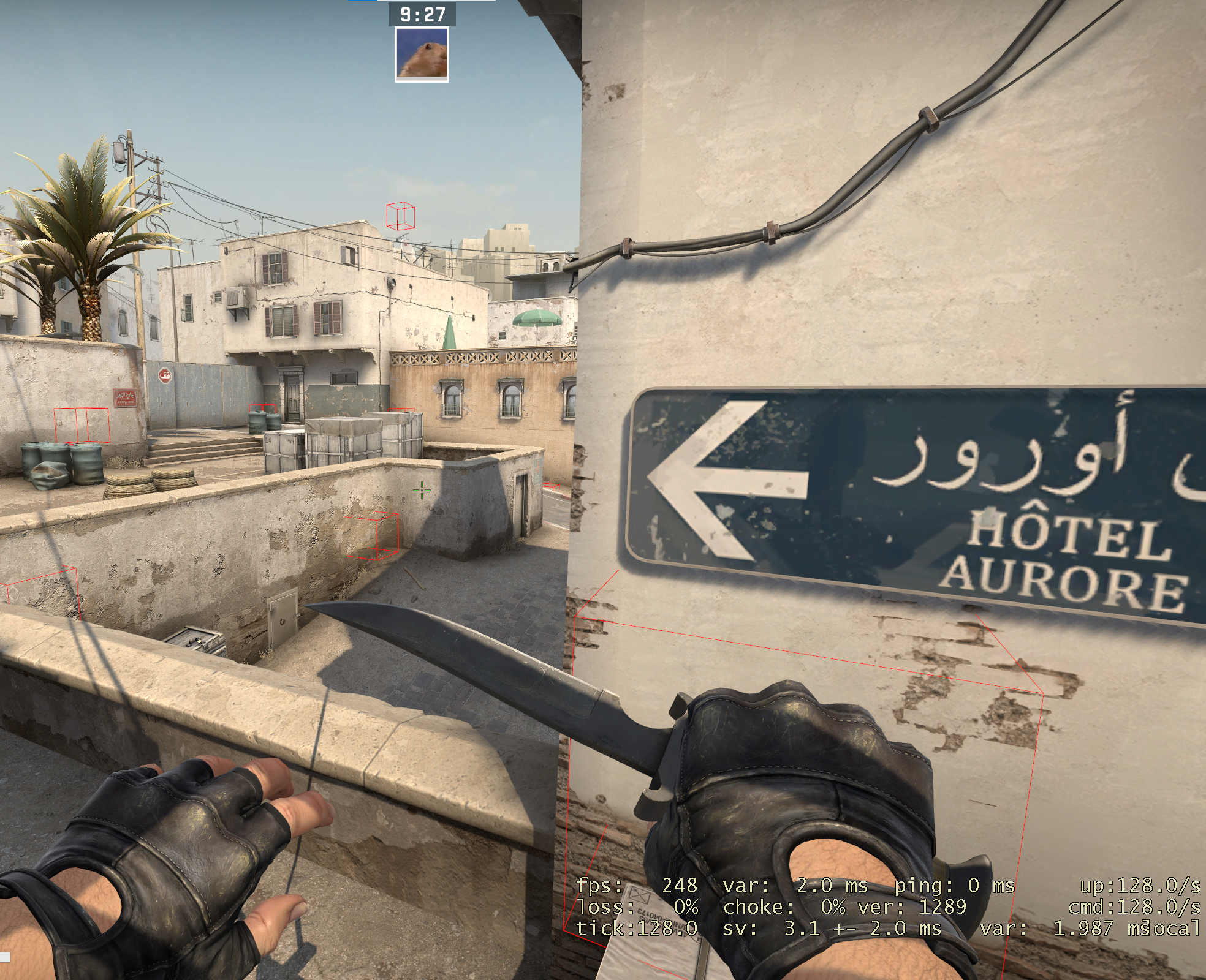
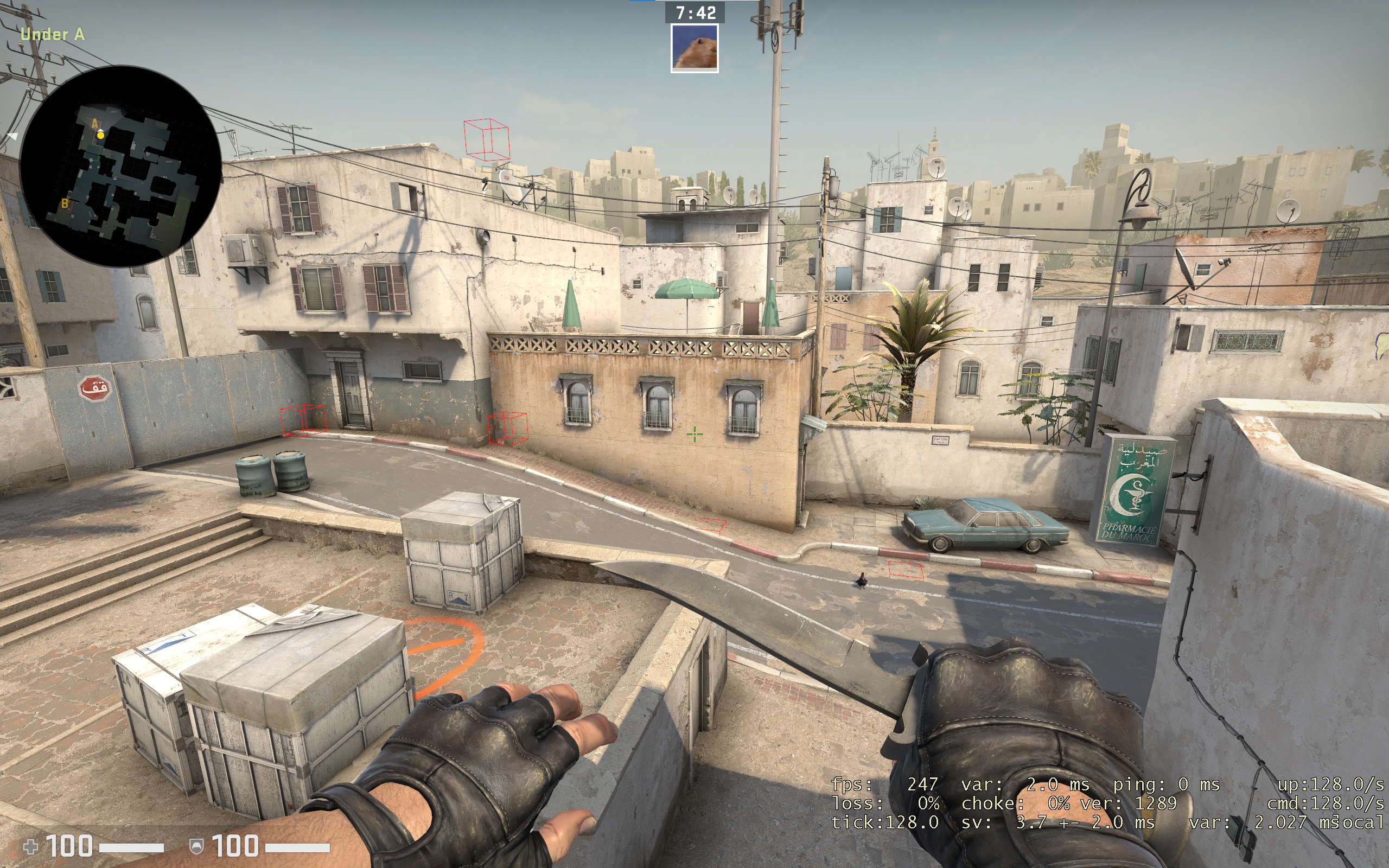
- Tracking Attention Over Time: I created transition matrices to track how players attention moves between clusters. At each tick, I tracked the nearest cluster to each player's ray-wall intersection. You can see one transition matrix in this file. The columns are source clusters and the rows are destination clusters. So column 23 row 21 is all the times when a player's ray-wall intersection moved from being nearest cluster 23 to 21. As I looked at these clusters, I noticed that cluster 23 was involved in far fewer transitions than cluster 20.
-
Identifying Ferrari Peeks:
I identified Ferrari peeks using the above clusters and transitions.
If a player checks cluster 20 but not 23, that means they looked at the right side of A but not the left side.
This is a Ferrari peek.
Thus, I found Ferrari peeks by checking for all rounds where
- there was at least one tick such that the ray from a T player standing on cat intersects a wall at a location that is closest to cluster 20
- and there were no ticks such that the ray from a T player standing on cat intersects a wall at a location that is closest to cluster 23
Based on this preliminary analysis and the three successful rounds, it seems that Ferrari peeking A from cat is a good idea.
How To Further Study This Aggression
This study has two major limitations:
- Limited Data: I only looked at four matches. This can be improved by automating the manual parts of the above step 5.
- Players' Attention Isn't Always On Their Crosshair: My analysis technique assumes that players are looking directly at their crosshair. If they are looking elsewhere on their screen, it's possible from them to check part of the site without my clustering algorithm detecting it. In the below video, stavn checks the left side of A site, near cluster 23, by jumping around the corner of cat and then air strafing back to safety. My attention mechanism, crosshair placement, doesn't detect that he's checking cluster 23 since his cursor is never pointed directly towards that part of the map. Rather, it's pointed at other parts of cat and at elevator.
If you have questions or comments about this analysis, including ways to improve it, please email me at durst@stanford.edu.